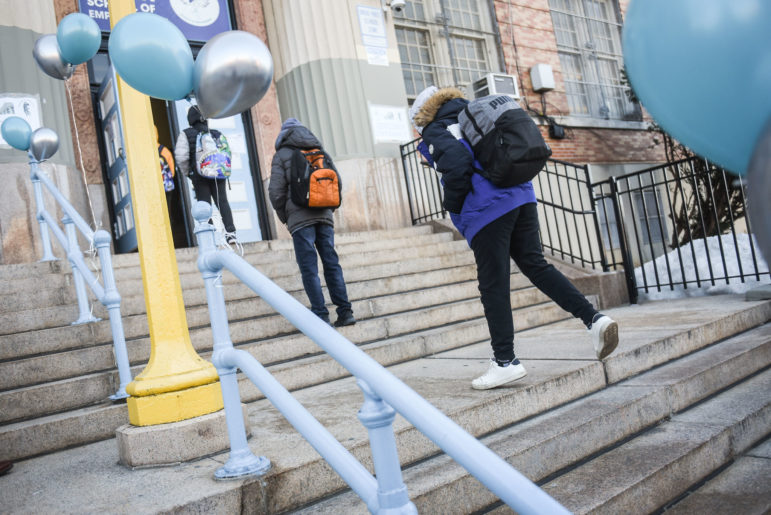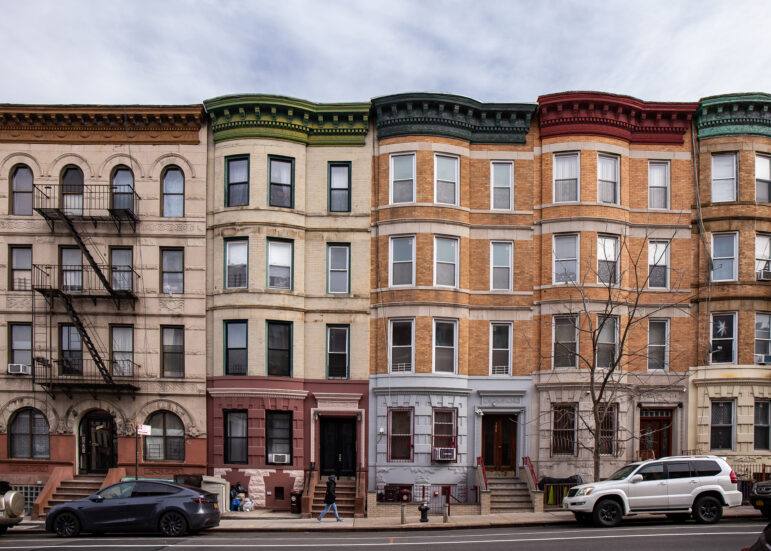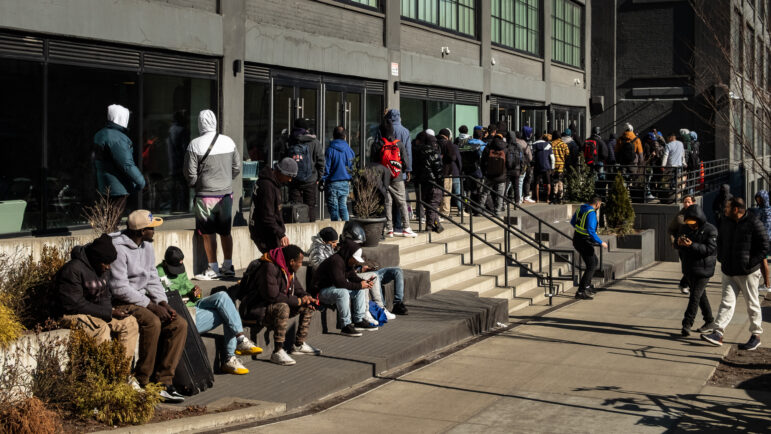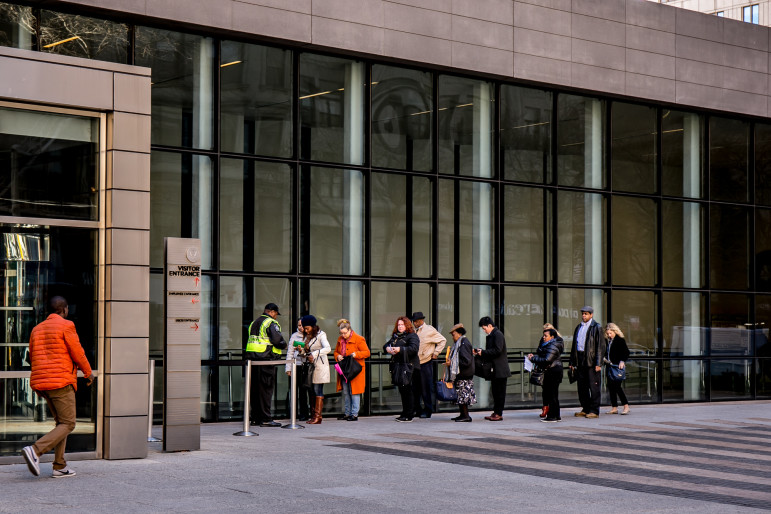The uptick comes despite a decline in the estimated number of new infections overall, which dropped by 17 percent. Latino New Yorkers represented 42 percent of the city’s new diagnoses in 2023, while Black New Yorkers represented 41 percent.
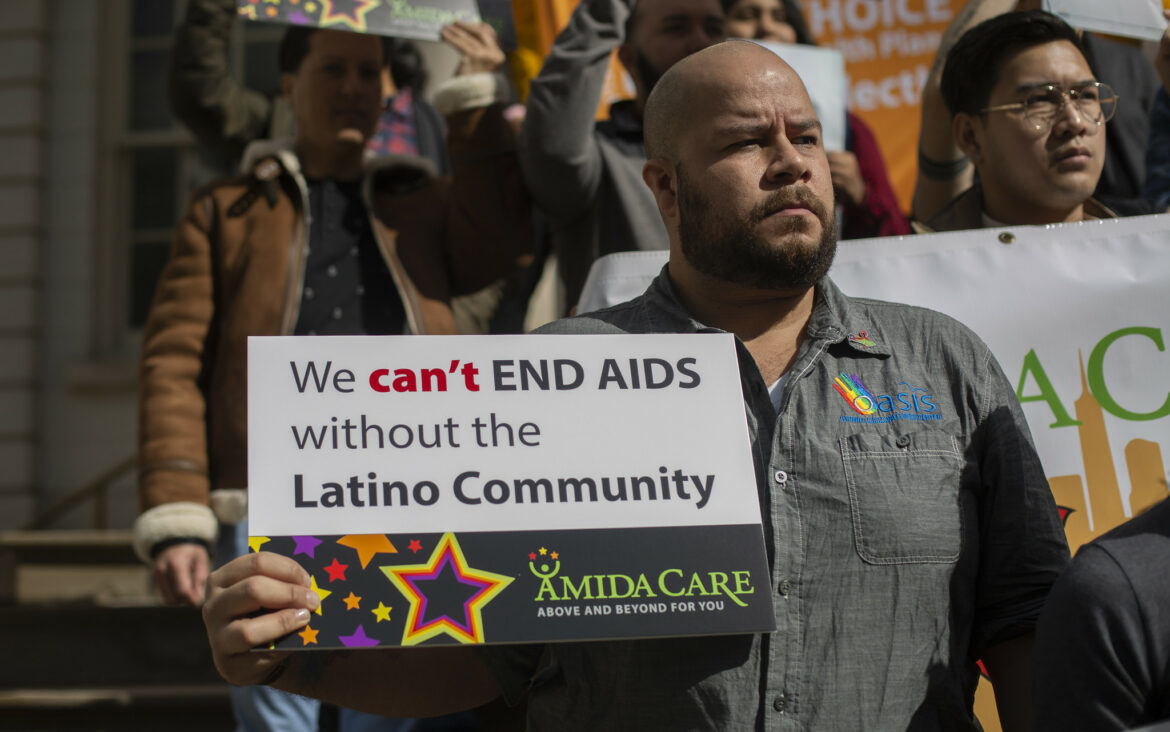
NYC Council/John McCarten
A 2019 press conference in front of City Hall on AIDS awareness in the Latino community.Lea la versión en español aquí.
The city released its 2023 Annual HIV Surveillance Report last week, showing not only an increase in the number of new diagnoses but also the highest number of new diagnoses since 2019, according to New York City Department of Health and Mental Hygiene (DOHMH) data.
Last year, 1,686 people were newly diagnosed with HIV in New York City, an increase of 7.6 percent from 2022. Latino New Yorkers represented 42 percent of new diagnoses, while Black New Yorkers represented 41 percent.
A spokesperson for the DOHMH said that it was not possible to say conclusively what drove the uptick, based on the data alone. The agency noted a divergence between new diagnoses, which increased, and estimated new infections, which decreased by 17 percent, from 1,347 in 2022 to 1,122 in 2023. The numbers suggest “that more existing infections were diagnosed,” according to the report.
“The increase in new diagnoses may be related to increased engagement in HIV testing and sexual health care—both among people who had not previously engaged in health care in some time as a result of COVID-19 and our response efforts, and among people who were engaging for the first time in New York City’s robust HIV testing and sexual health care systems,” DOHMH Deputy Press Secretary Chantal Gomez said via email.
While the city has seen a long-term decline in new cases, Gomez added, the Health Department will continue to monitor data over the next year, examine associated factors, focus on persistent disparities, and advance HIV prevention and care services.
Seth Pollack, director of community mobilization at Housing Works, said that the HIV/AIDS service community is still parsing through the findings. “We’re working to better understand the data behind these estimates to be able to tell whether this represents results of improved testing,” he said.
Denis Nash, executive director of the CUNY Institute for Implementation Science in Population Health (ISPH), which designed and developed the Ending the Epidemic (ETE) Dashboard System, said the increases “are likely due to a combination of catching up on diagnoses that were missed during [the] COVID emergency phase and a true increase in incidence, which could be due to a decrease in [pre-exposure prophylaxis] PrEP access and uptake during the COVID emergency.”
Unchanged for 2022 and 2023 is that Latino and Black New Yorkers account for 83 percent of new diagnoses in both years, disparities that “call for continued action in addressing the social and structural barriers that contribute to disparate HIV incidence and health outcomes,” the report says.
“Although we have made incredible progress in prevention and treatment of HIV there is much work to be done to reach everyone who has increased risk of exposure,” said Patrick McGovern, CEO of Callen-Lorde Community Health Center. “We must remain vigilant and, like we did this year, work to protect funding for important city wide programs that we know work.”
The Health Department said it will continue to invest in programming and services. It listed initiatives launched in recent years that target communities of color, including BE InTo Health, designed to increase engagement and re-engagement in HIV care and reduce racial and ethnic disparities in HIV outcomes; funding for nine clinics to implement evidence-based interventions to address the needs of Black and Latino residents living with HIV; and PlaySure Network 2.0, a network of clinical and non-clinical providers that deliver HIV and sexual health services.
The Department also funds Black Health, Inc. and the Latino Commission on AIDS to provide HIV outreach, training, and capacity-building to predominantly Black and Spanish-speaking Latino communities.
“The Health Department and city government should be able to say more about strategies,” Nash said over email. “I think the city has not done a great job with strategies to increase PrEP access and uptake in women of color in NYC, which is why we see some of those trends.”
The End AIDS NY Coalition, a statewide coalition of 90 healthcare centers, hospitals, and community-based organizations, is about to release a set of proposals for 2025, according to Pollack, who collaborates with the network. The proposals include increased state funding for culturally competent PrEP outreach, HIV testing, and prevention services.
“PrEP is extremely effective at preventing HIV transmission, but Black and Latino New Yorkers have not been adequately informed of this intervention or retained in healthcare,” Pollack said.
All in all, men accounted for 79 percent of the city’s new diagnoses last year, 43 percent of whom were Latino. Among newly diagnosed women in New York, Black women accounted for half, while 43.7 percent of all newly diagnosed women were foreign-born and 37 percent were born in the country.
On this, Pollack said, the coalition proposes increasing state funding for HIV testing, prevention, and early treatment access to reach women, especially women of color, including those who test positive for other Sexually Transmitted Infections (STIs), survivors and victims of domestic violence, and women leaving correctional facilities.
Other proposals include decriminalizing adult sex work, which Pollack says could help encourage sex workers to seek health care connections with less fear of incarceration, as well as authorizing overdose prevention centers, which could connect more people to HIV testing and prevention.
“Substance use disorder is syndemic with HIV/AIDS,” Pollack said, “with both showing disproportionate impacts on Black and Latino New Yorkers, and research shows people with HIV are more vulnerable to drug overdose than are those without HIV.”
The majority of new diagnoses occurred among young New Yorkers aged 20 to 39, accounting for 67 percent. “We’re also calling for state funding for novel strategies to engage young people in HIV prevention, testing, and treatment,” Pollack said. Youth engage with healthcare differently, he noted, so there should be targeted social media outreach, telemedicine offerings, and at-home testing services.
New diagnoses last year occurred among New Yorkers living in moderate (10 percent to below 20 percent of the federal poverty level, or FPL), high (20 percent to below 30 percent), and very high (greater than 30 percent FPL) poverty, which together accounted for 80.7 percent.
Johnny Guaylupo, assistant program director for youth prevention services at Housing Works, said the organization has increased testing and targeted outreach to communities most in need, such as the queer and BIPOC communities in Central Brooklyn, East New York, the South Bronx, and East Harlem—the very places where the rates of new HIV diagnoses were high.
“We are enhancing our presence in areas where we can engage the hardest-to-reach communities,” Guaylupo said. This includes non-traditional outreach efforts, supporting mutual aid groups, increasing telehealth services, and providing point-of-care testing for HIV that provides results in minutes.
Among transgender New Yorkers newly diagnosed with HIV, Latinos accounted for 48 percent, while Black residents made up 41 percent. DOHMH said that BE InTo Health clinics focus on serving Black and Latina transgender women with HIV, and several of the PlaySure Network 2.0 providers focus on outreach to transgender, gender nonconforming, and nonbinary (TGNCNB) people.
The department added that the TGNCNB Community Advisory Board (TCAB) meets regularly to ensure that sexual health marketing campaigns, promotional materials, clinical services, research, and other efforts are inclusive and representative of all New Yorkers.
Guaylupo said Housing Works is expanding its capacity to support the Spanish-speaking transgender community. And upcoming policy changes are expected to make it easier to access care.
“We want everyone to know that a new state law this year will expand access to lifesaving treatment and prevention options by prohibiting insurance plans from imposing prior authorizations for both PrEP as well as HIV treatment,” McGovern added. “The state will also prohibit co-pays for PrEP and PEP.”
To reach the reporter behind this story, contact Daniel@citylimits.org. To reach the editor, contact Jeanmarie@citylimits.org
Want to republish this story? Find City Limits’ reprint policy here.


